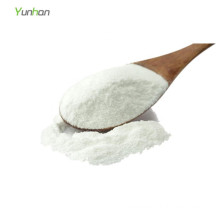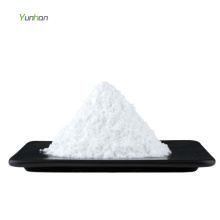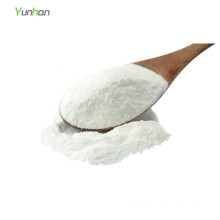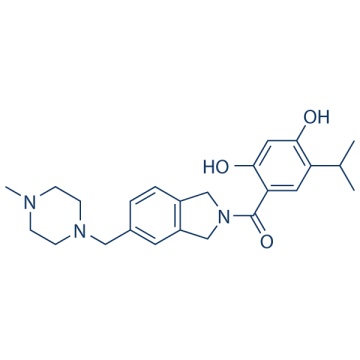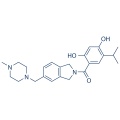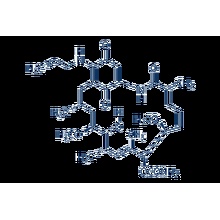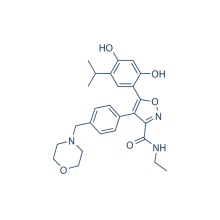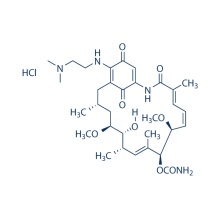AT13387 912999-49-6
Product Description
.cp_wz table {border-top: 1px solid #ccc;border-left:1px solid #ccc; } .cp_wz table td{border-right: 1px solid #ccc; border-bottom: 1px solid #ccc; padding: 5px 0px 0px 5px;} .cp_wz table th {border-right: 1px solid #ccc;border-bottom: 1px solid #ccc; padding: 5px 0px 0px 5px;}
Molecular Weight:
409.52 AT13387 is a selective potent Hsp90 inhibitor with IC50 of 18 nM in A375 cells, displays a long duration of anti-tumor activity. Phase 2.
Biological Activity
The Kd for AT13387 binding is 0.7 nM. This compares to a Kd of 6.7 nM for the binding of the ansamycin 17-AAG to the same site. The
mean stoichio metry of binding for AT13387 is 1.03. The inhibition of a
number of isolated kinases by AT13387 is also investigated including
CDK 1, CDK 2, CDK4, FGFR3, PKB-b, JAK2, VEGFR2, PDGFRβ and Aurora B.
None of the tested kinases are significantly inhibited at concentrations
below 30 μM. AT13387 is a Potent Inhibitor of the proliferat ion and
survival of many different cell lines (such as MES-SA cell line) from a
variety of different tumor types. Across a panel of 30 tumor cell lines,
AT13387 potently inhibits cell proliferation with GI50 values in the
range 13-260 nM. AT13387 inhibits proliferation of the non-tumorigenic
human prostate epithelial cell line PNT2 with a GI50 value of 480 nM.
When given on an intermittent basis, AT13387 could be tolerated at doses
of up to 70 mg/kg twice weekly or 90 mg/kg once weekly. Body weight
loss in mice does not exceed 20% before recovering in all cases except
one, and loss is highest following the second dose. Tumor growth
inhibition is similar in NCI-H1975 for both dosing regimens. The
maintenance of antitumor effects with such a prolonged off-treatment
period is consistent with the extended pharmacodynamic action of AT13387
observed for mutant EGFR and other biomarkers in vitro and in vivo and
the extended retention of AT13387 in tumors.
Protocol(Only for Reference)
Kinase Assay: [2]
Cell Assay: [2]
Animal Study: [2]
Conversion of different model animals based on BSA (Value based on data from FDA Draft Guidelines)
For example, to modify the dose of resveratrol used for a mouse (22.4 mg/kg) to a dose based on the BSA for a rat, multiply 22.4 mg/kg by the Km factor for a mouse and then divide by the Km factor for a rat. This calculation results in a rat equivalent dose for resveratrol of 11.2 mg/kg.
Chemical Information
Molarity Calculator
Dilution Calculator
Molecular Weight Calculator
Contact us if you need more details on 912999-49-6. We are ready to answer your questions on packaging, logistics, certification or any Other aspects about 912999-49-6 AT13387、AT13387. If these products fail to match your need, please contact us and we would like to provide relevant information.
Molecular Weight:
409.52 AT13387 is a selective potent Hsp90 inhibitor with IC50 of 18 nM in A375 cells, displays a long duration of anti-tumor activity. Phase 2.
Biological Activity
The Kd for AT13387 binding is 0.7 nM. This compares to a Kd of 6.7 nM for the binding of the ansamycin 17-AAG to the same site. The
mean stoichio metry of binding for AT13387 is 1.03. The inhibition of a
number of isolated kinases by AT13387 is also investigated including
CDK 1, CDK 2, CDK4, FGFR3, PKB-b, JAK2, VEGFR2, PDGFRβ and Aurora B.
None of the tested kinases are significantly inhibited at concentrations
below 30 μM. AT13387 is a Potent Inhibitor of the proliferat ion and
survival of many different cell lines (such as MES-SA cell line) from a
variety of different tumor types. Across a panel of 30 tumor cell lines,
AT13387 potently inhibits cell proliferation with GI50 values in the
range 13-260 nM. AT13387 inhibits proliferation of the non-tumorigenic
human prostate epithelial cell line PNT2 with a GI50 value of 480 nM.
When given on an intermittent basis, AT13387 could be tolerated at doses
of up to 70 mg/kg twice weekly or 90 mg/kg once weekly. Body weight
loss in mice does not exceed 20% before recovering in all cases except
one, and loss is highest following the second dose. Tumor growth
inhibition is similar in NCI-H1975 for both dosing regimens. The
maintenance of antitumor effects with such a prolonged off-treatment
period is consistent with the extended pharmacodynamic action of AT13387
observed for mutant EGFR and other biomarkers in vitro and in vivo and
the extended retention of AT13387 in tumors.
Protocol(Only for Reference)
Kinase Assay: [2]
| HSP90 competition isothermal calorimetry | Kd values for AT13387 binding to HSP90 are determined with a competition Isothermal Calorimetry (ITC) format. ITC experiments are performed on a Micro Cal VP-ITC at 25 °C in a buffer comprising 25 mM Tris, 100 mM NaCl, 1 mM MgCl2 and 1 mM Tris(2-carboxy- ethyl)phosphine at pH 7.4 in order to maintain the higher affinit |
|---|
Cell Assay: [2]
| Cell lines | A375, 22RV1 and T474 cells |
|---|---|
| Concentrations | 1 μM |
| Incubation Time | 4 hours |
| Method | The human cell lines including A375, 22RV1, T474, DU1 45, LNCa P, MCF-7, DA-MB-468 are seeded into 96-well plates before the addition of AT13387 in 0.1% (v/v) DMSO. GI50 are determined using a 10-point dose response curve for three cell doubling times. After AT13387 incubation 10% (v/v), Alamar blueis added, and cells are incubated for a further 4 hours. Fluorescence is read. |
Animal Study: [2]
| Animal Models | Athymic BALB /c mice | ||
|---|---|---|---|
| Formulation | 17.5% cyclodextrin | ||
| Dosages | 80 mg/kg | ||
| Administration | Intraperitoneal adminis tration | ||
| Solubility | 15% Captisol, 30 mg/mL | ||
| * Please note that Selleck tests the solubility of all compounds in-house, and the actual solubility may differ slightly from published values. This is normal and is due to slight batch-to-batch variations. | |||
Conversion of different model animals based on BSA (Value based on data from FDA Draft Guidelines)
| Species | Baboon | Dog | Monkey | Rabbit | Guinea pig | Rat | Hamster | Mouse |
| Weight (kg) | 12 | 10 | 3 | 1.8 | 0.4 | 0.15 | 0.08 | 0.02 |
| Body Surface Area (m2) | 0.6 | 0.5 | 0.24 | 0.15 | 0.05 | 0.025 | 0.02 | 0.007 |
| Km factor | 20 | 20 | 12 | 12 | 8 | 6 | 5 | 3 |
| Animal A (mg/kg) = Animal B (mg/kg) multiplied by | Animal B Km |
| Animal A Km |
For example, to modify the dose of resveratrol used for a mouse (22.4 mg/kg) to a dose based on the BSA for a rat, multiply 22.4 mg/kg by the Km factor for a mouse and then divide by the Km factor for a rat. This calculation results in a rat equivalent dose for resveratrol of 11.2 mg/kg.
| Rat dose (mg/kg) = mouse dose (22.4 mg/kg) × | mouse Km(3) | = 11.2 mg/kg |
| |
Chemical Information
| Molecular Weight (MW) | 409.52 |
|---|---|
| Formula | C 24H31N3O3 |
| CAS No. | 912999-49-6 |
| Storage | 3 years -20℃Powder |
|---|---|
| 6 months-80℃in solvent (DMSO, water, etc.) | |
| Synonyms | |
| Solubility (25°C) * | In vitro | DMSO | 25 mg/mL (61.04 mM) |
|---|---|---|---|
| Water | <1 mg/mL ( | ||
| Ethanol | <1 mg/mL ( | ||
| In vivo | 15% Captisol | 30 mg/mL | |
| * <1 mg/ml means slightly soluble or insoluble. * Please note that Selleck tests the solubility of all compounds in-house, and the actual solubility may differ slightly from published values. This is normal and is due to slight batch-to-batch variations. | |||
| Chemical Name | (2,4-dihydroxy-5-isopropylphenyl)(5-((4-methylpiperazin-1-yl)methyl)isoindolin-2-yl)methanone |
|---|
Molarity Calculator
Dilution Calculator
Molecular Weight Calculator
Contact us if you need more details on 912999-49-6. We are ready to answer your questions on packaging, logistics, certification or any Other aspects about 912999-49-6 AT13387、AT13387. If these products fail to match your need, please contact us and we would like to provide relevant information.
Product Categories : Cytoskeletal Signaling > HSP Inhibitor
Other Products
Hot Products
Astragaloside AChlortetracycline HCl 64-72-2Paclitaxel 33069-62-4Dexamethasone Acetate 1177-87-3Dinaciclib (SCH727965) 779353-01-4CHIR-124 405168-58-3Ro3280 1062243-51-9TAME 901-47-3CCG-1423 285986-88-110058-F4 403811-55-2Dabigatran (BIBR 953) 211914-51-1H 89 2HCl 130964-39-5T0901317 293754-55-9Aprepitant 170729-80-3Turofexorate Isopropyl (XL335) 629664-81-9BMS-378806 357263-13-9
